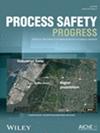克服为反应过程实施安全仪表系统的挑战
IF 1
4区 工程技术
Q4 ENGINEERING, CHEMICAL
引用次数: 0
摘要
安全仪表系统(SISs)通常用于防止可能严重伤害甚至杀死人员或公众的过程安全危害。反应过程是SISs的一个常见应用,因为在反应过程中可能会释放大量能量,这往往会导致容器的灾难性破裂。虽然有些应用可以通过关闭紧急阻断阀来解决反应性危险,但其他应用可能需要排污、灭杀剂和其他复杂的响应措施。需要处理的反应越多,SIS就越复杂,从而需要更有经验的过程工程参与以获得正确的设计。用于管理反应性应用风险的保护层通常侧重于通过确保温度或压力永远不会达到不安全状态来防止失控的反应。这看起来很简单,但反应过程可能以更难以预测的方式响应失控,因此,与典型的SIS相比,对故障点、响应时间和传感器架构的规范需要更多的分析。本文讨论了响应式应用程序带来的一些独特挑战,并提供了一些示例来说明如何克服这些挑战。本文章由计算机程序翻译,如有差异,请以英文原文为准。
Overcome the challenges of implementing safety instrumented systems for reactive processes
Abstract Safety instrumented systems (SISs) are generally used against process safety hazards with the potential to severely injure, or even kill, personnel or members of the public. Reactive processes are a common application for SISs due to the potential for significant energy release during the reaction, which tends to cause catastrophic rupture of the vessel. While some applications can address the reactive hazard by closing emergency block valves, others may require blowdowns, kill agents, and other complex response actions. The more that needs to be done to address the reaction, the more complicated the SIS, resulting in the need for more experienced process engineering involvement to get the design right. The protection layers allocated to manage the risk of reactive applications typically focus on the prevention of runaway reactions by ensuring that the temperature or pressure never reach an unsafe state. This seems straightforward, but reactive processes can respond to loss of control in ways that are more difficult to predict, so the specification of trip point, response time, and sensor architecture requires more analysis than typical SIS. This paper discusses some of the unique challenges posed by reactive applications and provides examples to illustrate how to overcome these challenges.
求助全文
通过发布文献求助,成功后即可免费获取论文全文。
去求助
来源期刊

Process Safety Progress
工程技术-工程:化工
CiteScore
2.20
自引率
10.00%
发文量
99
审稿时长
6-12 weeks
期刊介绍:
Process Safety Progress covers process safety for engineering professionals. It addresses such topics as incident investigations/case histories, hazardous chemicals management, hazardous leaks prevention, risk assessment, process hazards evaluation, industrial hygiene, fire and explosion analysis, preventive maintenance, vapor cloud dispersion, and regulatory compliance, training, education, and other areas in process safety and loss prevention, including emerging concerns like plant and/or process security. Papers from the annual Loss Prevention Symposium and other AIChE safety conferences are automatically considered for publication, but unsolicited papers, particularly those addressing process safety issues in emerging technologies and industries are encouraged and evaluated equally.
 求助内容:
求助内容: 应助结果提醒方式:
应助结果提醒方式:


